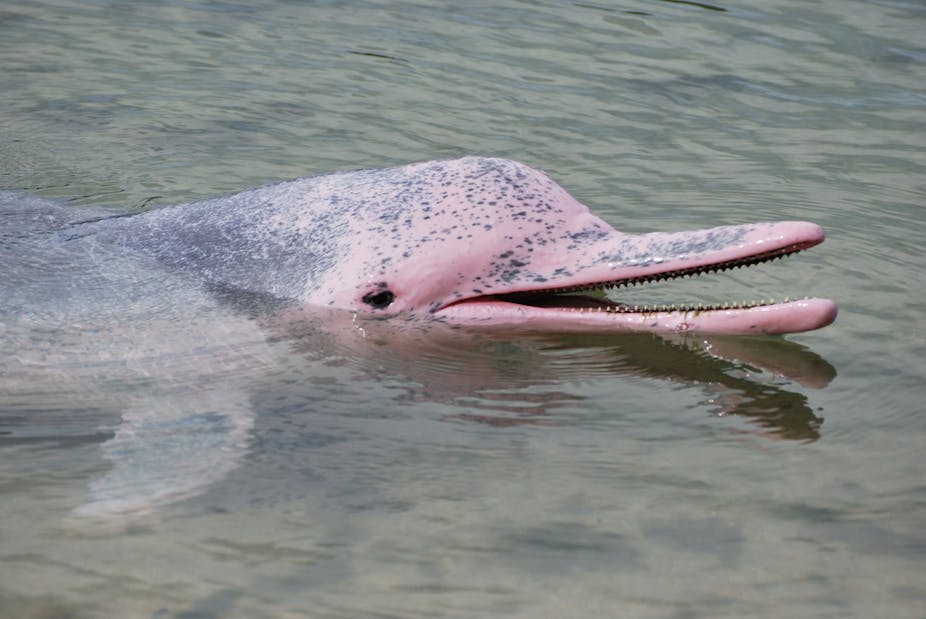Take a trip around Lantau island in Hong Kong and you might see something surprising: a pod of pink dolphins. Technically, they’re known as Chinese or Hong Kong white dolphins and are a variety of the Indo-Pacific humpbacked dolphins or Sousa chinensis of South-East Asia and Australia.
Similar in size to the more common bottlenose variety, the Chinese dolphins are born black and then gradually change colour to grey and then white as they get older. But sometimes the adults appear a bright shade of pink. This is due to the presence of blood vessels located very close to the skin that help the animal stay cool.
Like all dolphins, they have a layer of blubber to help them keep warm in the ocean. But when they are in warm tropical waters they actually need to lose heat by passing blood through the surface blood vessels. So when they get hot this cooling mechanism kicks in and they appear pink – just like us with flushed cheeks after exercise on a hot day.

Pink dolphins are also found in the Amazon river in South America. They are known as boto dolphins, and are so coloured for the same reason. However, boto adults become more pink over time as their skin is rubbed away. For this reason males are pinker than females because they are more frequently aggressive with one another, basically exposing the blood vessels as time goes on.
The Indo-Pacific humpback dolphin is listed in the Convention on the Conservation of Migratory Species as having an unfavourable conservation status. Research in the late 1990s found only a small population of around 200 remaining in the waters around Hong Kong and conservationists say there are now even fewer. They tend to stay in the inshore waters and are not migratory, limiting themselves to an area of around 100km2.
This means they are vulnerable to the full range of human activities that take place around Hong Kong, which is one of the busiest ports in the world. As well as being caught in fishing nets and struck by ships, they are also disturbed by the noise from shipping and marine construction, which interferes with their communication, hunting and causes hearing damage. Recently, the Hong Kong Dolphin Conservation Society warned that plans to expand the city’s island airport and build a bridge to nearby Macau could drive the population away completely.

They are also vulnerable to pollutants from sewage and industry that are discharged into the area’s rivers and coastal waters. We judge the health of UK seaside bathing waters by the concentration of faecal coliform bacteria. We consider taking in just 200 coliforms on a single occasion unacceptable, yet the Hong Kong dolphins are ingesting over 100 times that amount daily.
In Hong Kong, water dredging and the disposal of contaminated sediments is releasing further contaminants. Mercury, organochlorine, pesticide, flame retardant and butyltin (now banned from use in antifouling paint) concentrations in Hong Kong dolphin tissues have been found to be much higher than from populations further afield.
With this in mind it’s difficult to be optimistic about the future of these pink dolphins. Sadly, they may follow the fate of the baiji, the Chinese Yantze river dolphin, which was declared functionally extinct following dam-building, ship collisions and pollution.

